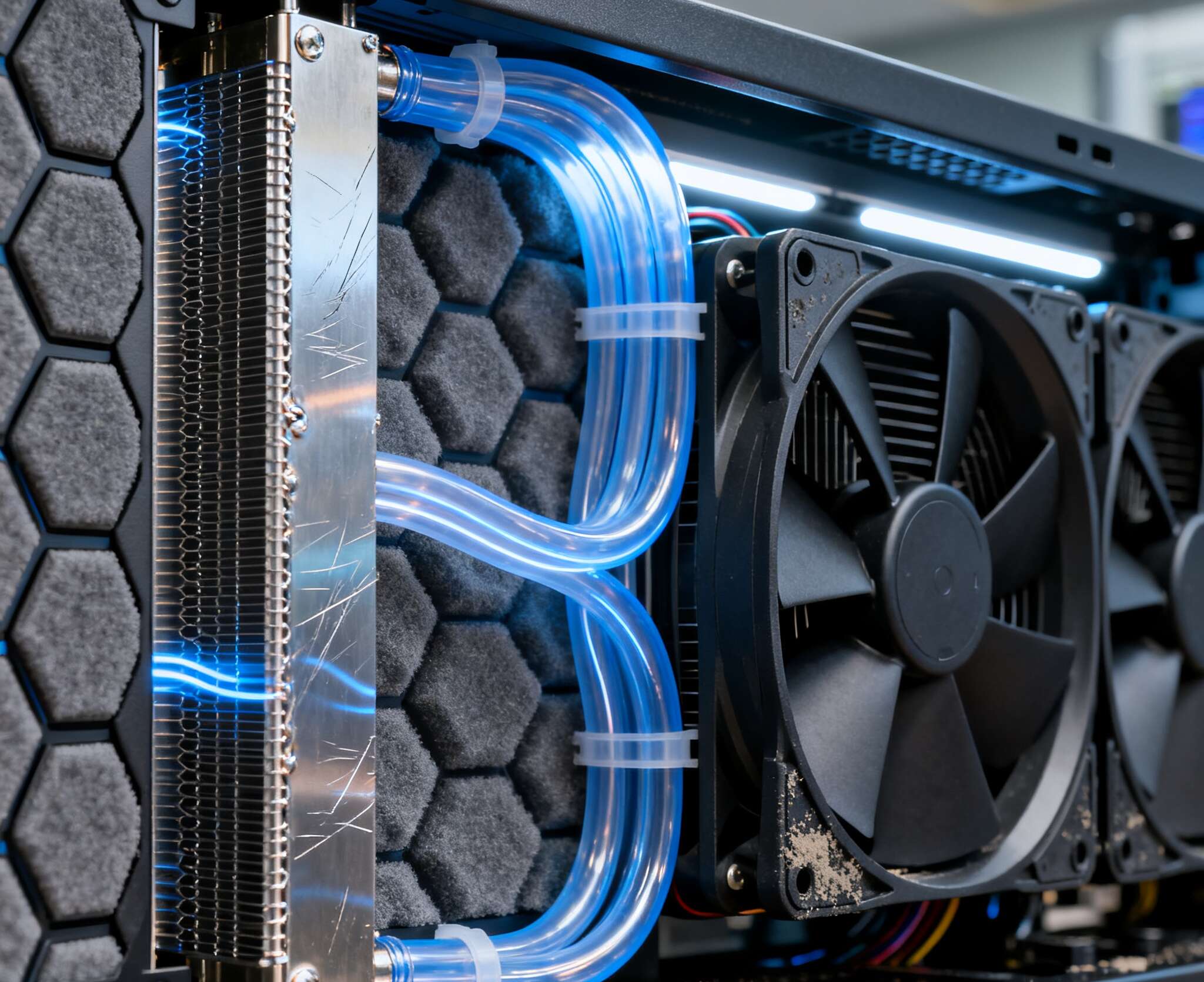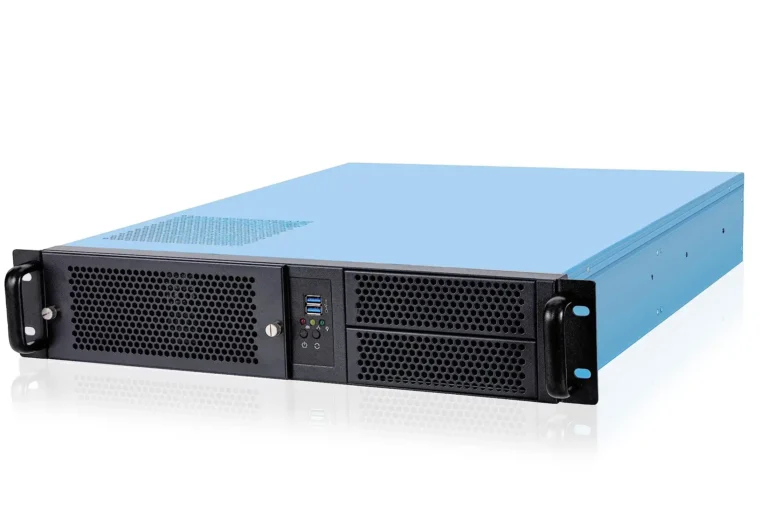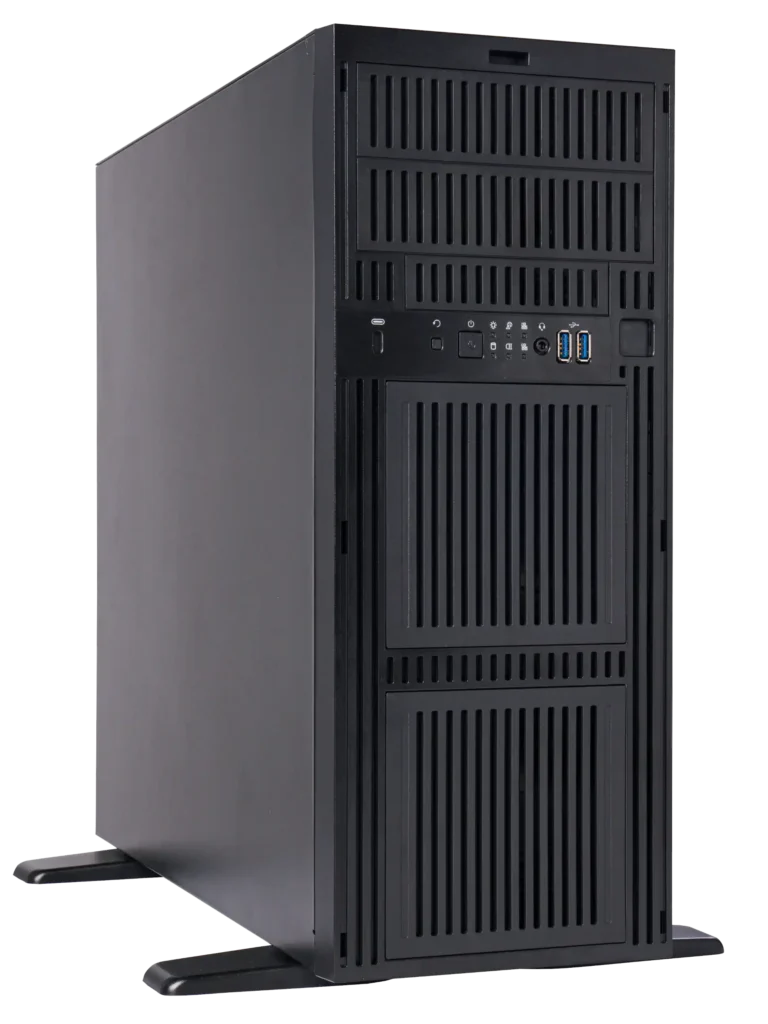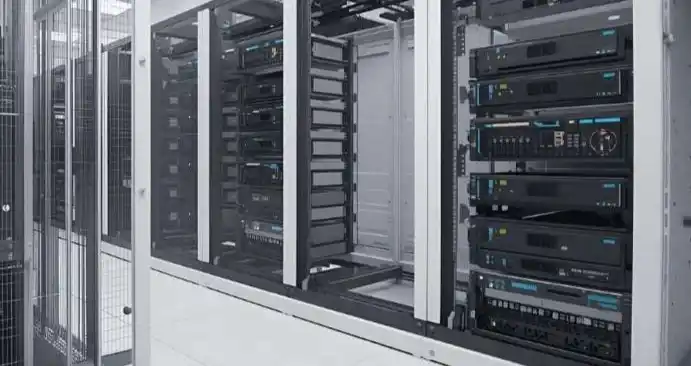You want dense compute, not a take-off roll. If your 1U sounds like a runway at full tilt, you’re not alone. Let’s break the noise cycle with plain talk, real field notes, and choices that actually ship. I’ll keep it conversational, a bit scrappy, and super practical. (Yes, a few tiny typos on purpose—dont panic.)
1U server cooling: physics before fixes
Small chassis, small fans, high static pressure. That’s the 1U story. Forty-millimeter blowers need serious RPM to push air through heat sinks, VRMs, backplanes, and drive cages. The result: sharp fan tone, fast spin-ups on load-step, big dBA swings when inlet temp creeps. You can’t “wish” that away, but you can manage the acoustic envelope.
Playbook for a quiet-ish 1U server pc case
Start with things you can change in minutes, then escalate.
Tune fan control, not just fans
- Lock in a sane PWM curve. Many boards ship with aggressive defaults that chase every 2–3 °C spike. Ease the slope, add a short ramp delay, and you cut the “whoosh-whoosh” effect.
- Enable any vendor acoustic cap or “power-optimized” mode.
- Drop inlet temperature a few degrees. Even a small ΔT buys lower RPM at the same load.
- Watch hot spots: HBA, 100G NICs, NVMe backplane. If sensors see 80–90 °C bursts there, the fan wall will sprint.
Optimize airflow in a server rack pc case
- Seal leaks. Foam gaskets and blank panels keep air going through fins, not around them.
- Direct the stream. Add short shrouds so air crosses memory and VRM before it exits.
- Balance front-to-back pressure. You want steady CFM, not turbulence at the fan wall.
- Cable like you mean it. Tie-downs and short runs reduce wake—yes, cable drag is real in 1U.
When 1U isn’t the vibe: move up a size
If your workload is sustained and hot—AI infer, HFT math, NVMe heavy writes—consider 2U/3U/4U. Bigger fans, lower RPM, way nicer tone. It’s not giving up, it’s grown-up engineering.
- Browse form-factors:
IStoneCase builds all of the above in volume, so swapping size doesn’t wreck your BOM discipline or rack density plan.
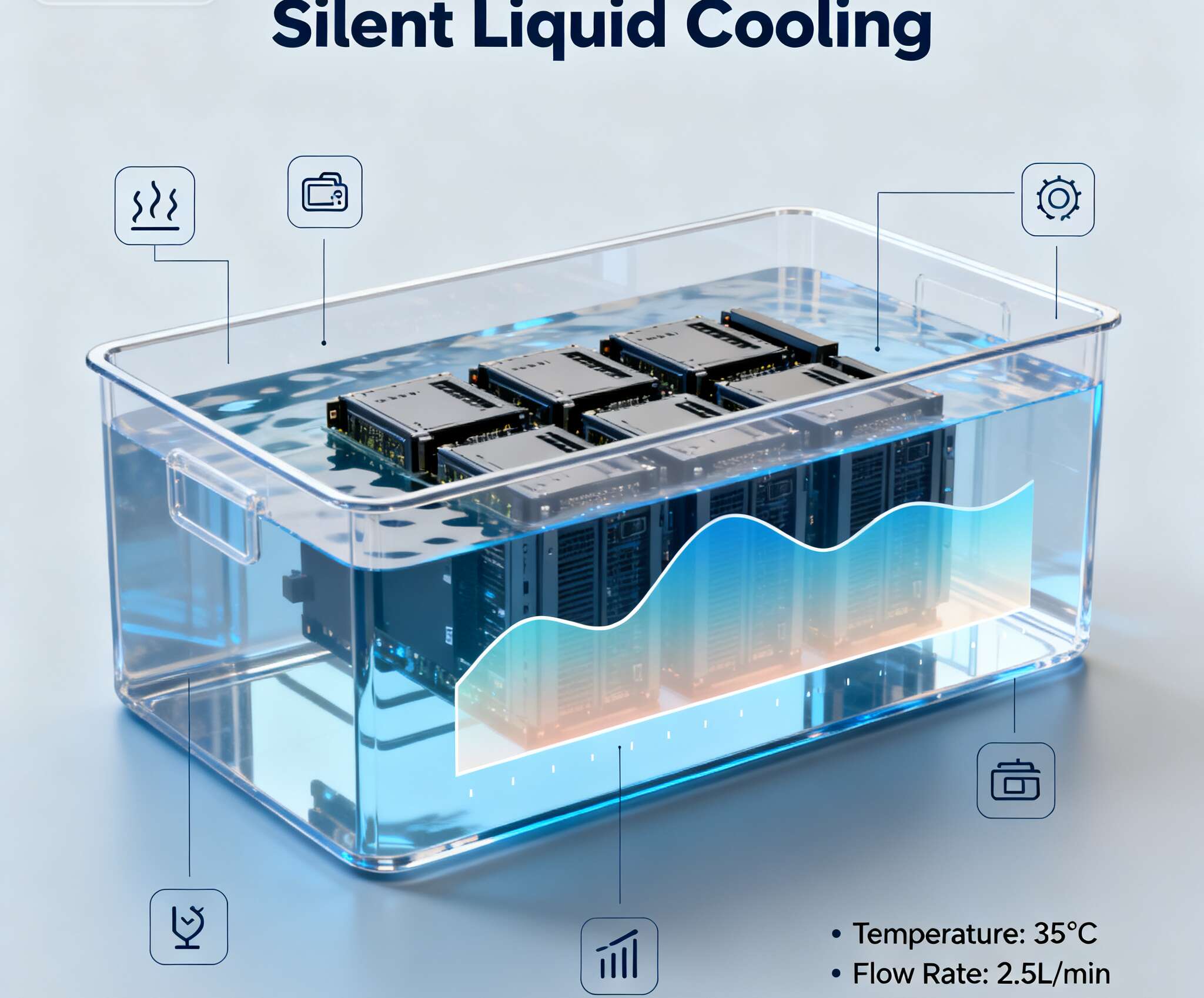
Data & field notes that anchor the claims
Below is a compact table with “what to do,” where it fits, and typical outcomes we see in labs and live racks. Decibels are typical bands for mainstream 1U under office-like acoustics; exact numbers vary by CPU TDP, drive count, and inlet temp.
| Claim | What actually helps | Where it fits | Trade-offs | Typical dBA band* |
|---|---|---|---|---|
| 1U needs high RPM to clear dense fins and backplanes | Keep 40 mm fans but soften PWM slope; fix leaks; guide air over VRM/NIC | General 1U compute | Slightly higher steady temps vs. spiky ramps | Idle ~45–50, load burst ~68–72 |
| “Quiet fans” alone don’t save you | If CFM/static pressure drop, the board chases temp and spins harder | Mixed I/O + CPU | Risk of runaway RPM if sensors see heat | Similar or worse unless airflow is engineered |
| Lower ΔT = lower noise | Cooler inlet = lower duty cycle at same load | Edge closets, offices | Needs ducting or better room air | −3 to −6 dBA at like-for-like load |
| 2U/3U/4U calm the tone | Larger fan wall, lower static pressure, smoother sound | Sustained high load | More RU, different rails | Idle ~35–42, load ~55–65 |
| Liquid trims the fan wall | D2C cold-plate or partial liquid = fans slow down a lot | Dense AI or HPC | More parts, service playbook | Big drop in tone; dBA depends on pump path |
*Measured at 1 m in office-like spaces; your rack, room, and ear will vary.
Real-world scenarios (so you can picture it)
- Office lab / POC bay: You’ve got two 1U nodes for CI and some GPU infer. Tune PWM, add intake baffling, and close front gaps. If the tone still hurts, move one node to 2U Server Case and keep the GPU in 1U. Mixed RU, calmer bay.
- Micro-DC / retail edge: Tight closet, limited HVAC. Use a computer case server with sealed front, dust filters, and a more forgiving fan wall. A short duct to the drop ceiling helps. Add rails that make swaps fast—see Chassis Guide Rail.
- Homelab / prosumer: Light virtualization and NAS. A lean 1U can be fine if you pick lower-TDP parts and high-quality 40 mm blowers. If you want whisper, step to 4U Server Case with big fans.
- AI infer pod: Two low-profile GPUs in 1U will sing. If you must stay 1U, design for airflow straight across the GPU shrouds, not over the top. Honestly, a tuned atx server case in 3U/4U with smooth intake is the saner acoustic move.
Picking the right server rack pc case and rails
Noise is not only about the box. It’s how the box lives in the rack.
- Choose cases with straight-through airflow and minimal front obstructions.
- Look for fan walls that accept PWM control across zones—CPU vs. I/O.
- Rails matter for serviceability and stability. Use 2U Chassis Guide Rail or 4U Chassis Guide Rail that keep sag and vibration down. Rattles = perceived noise, even if SPL meters say okay.
- Keep a few blank panels and dust covers handy. Air goes where you let it.
If you’re browsing broadly, start at Server Case to view the full line, rackmount to wallmount.
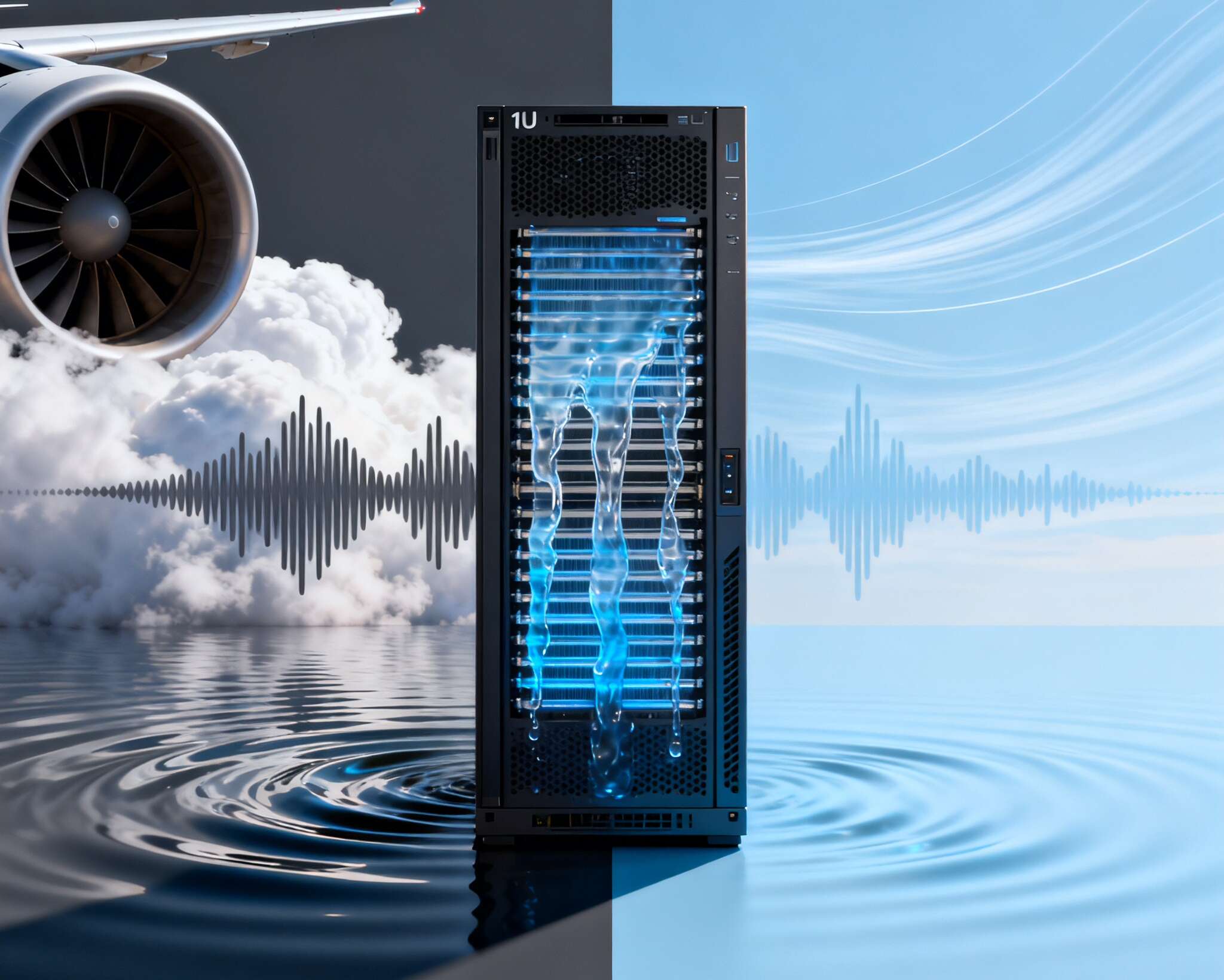
Why IStoneCase shows up in quieter builds
IStoneCase (yes, that’s us) manufactures rackmount and server pc case platforms engineered for predictable airflow and easier acoustic tuning. We ship GPU server cases, Rackmount, Wallmount, NAS devices, and ITX case options with OEM/ODM flexibility for data centers, algorithm teams, MSPs, research labs, and builders who just want gear that runs cool without drama.
- Need custom baffles, a different fan wall, or a bespoke air shroud around hot NICs? That’s routine in our Customization Server Chassis Service.
- Targeting an ATX server case layout that stays under your dBA threshold in an open office? We’ll iterate on the intake mesh, filter density, and fin spacing, then validate across realistic inlet temps.
- Bulk roll-out with rails and trays that don’t squeal or buzz? We kit rails from the jump to save you tickets later.
Keyword corner, straight from ops
- server rack pc case: pick straight-through airflow, real fan zoning, and clean front panel design.
- server pc case: watch VRM/NIC shadowing; add short baffles not long tunnels.
- computer case server: if it’s going into a multipurpose room, avoid high-restriction filters unless you validated CFM.
- atx server case: more internal volume, larger fans, smoother tone. Good trade if RU isn’t sacred.
Quick checks before you buy or mod
- Plot RPM vs. inlet temp at idle and under a 15-minute sustained load. You want flat, not sawtooth.
- Touch the backplane and NIC heatsinks (careful). If they’re scorching, the fan wall will never calm down.
- Keep cable wakes out of the main stream. A tidy harness is free airflow.
- Listen for resonance. If the chassis hums at a single pitch, add small damping pads near the fan wall or drive cage. Easy win.
- Dont forget the room. If your HVAC drifts, your fans follow.
Wrap-up: quiet is design, not luck
You can make a 1U behave, but you do it with physics, not wishes. Tune the curve, seal the leaks, manage ΔT. If the workload stays hot, pick a form-factor that respects ears and airflow. IStoneCase helps you land that balance with ready-to-deploy 1U Server Case through 6U Server Case, rails that don’t rattle, and OEM/ODM customization when you want it just right.
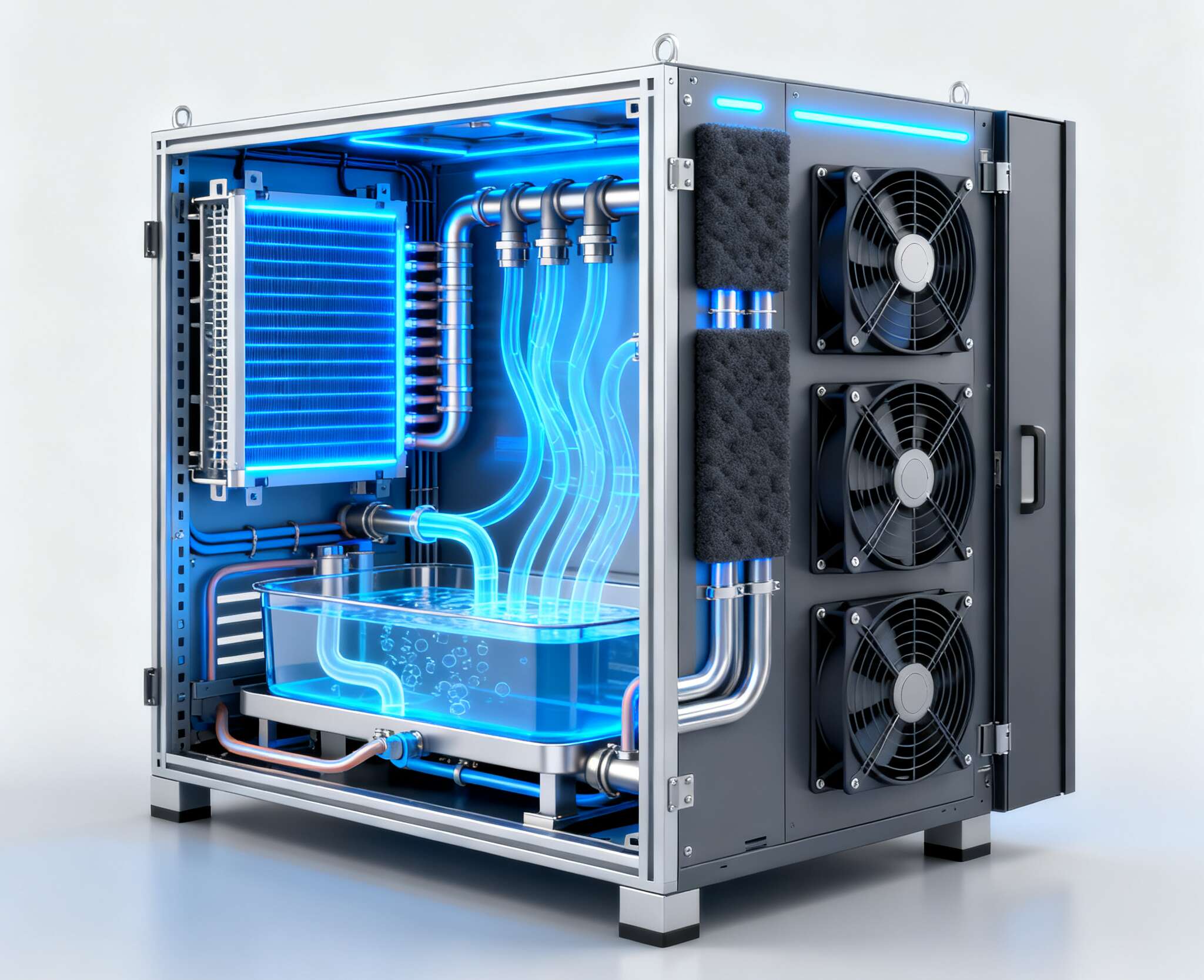
Appendix: quick reference table (for the busy folks)
| Knob | What to change | Why it matters | Pitfall to avoid |
|---|---|---|---|
| PWM curve | Lower slope + ramp delay | Cuts fan hunting, smoother tone | Over-flattening → heat soak |
| Air sealing | Gaskets, blank panels, shrouds | Forces air through fins | Foam that sheds into fans |
| Inlet ΔT | Cooler room air, short duct | Same load at lower RPM | Condensation near filters (rare, but mind dew point) |
| Form-factor | 2U/3U/4U swap | Bigger fans, calmer acoustics | More RU, rail change |
| Components | NIC/HBA heatsinks, drive spacing | Removes local hot spots | Ignoring sensor placement |
| Rails | Rigid slide rails | Less vibration = lower perceived noise | Cheap rails that buzz at certain RPMs |

